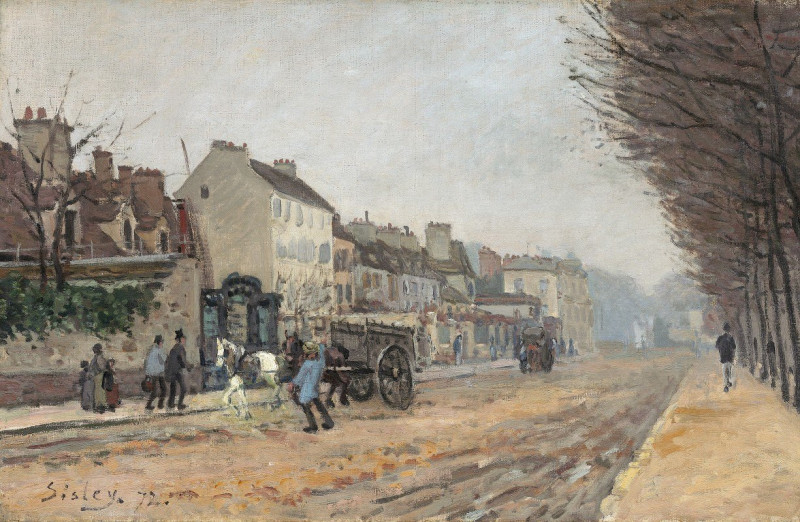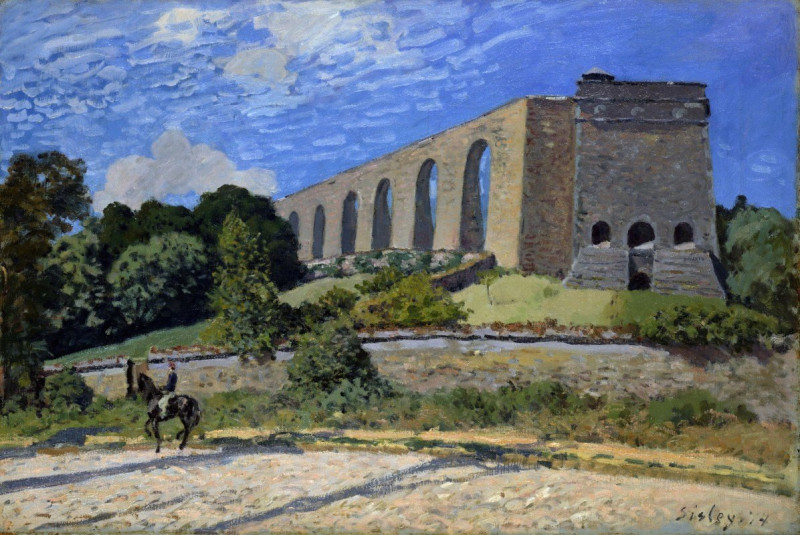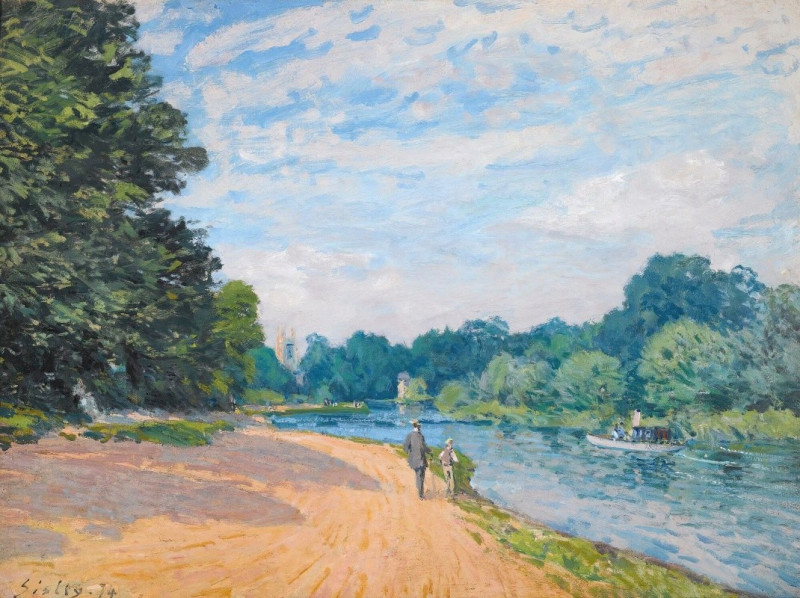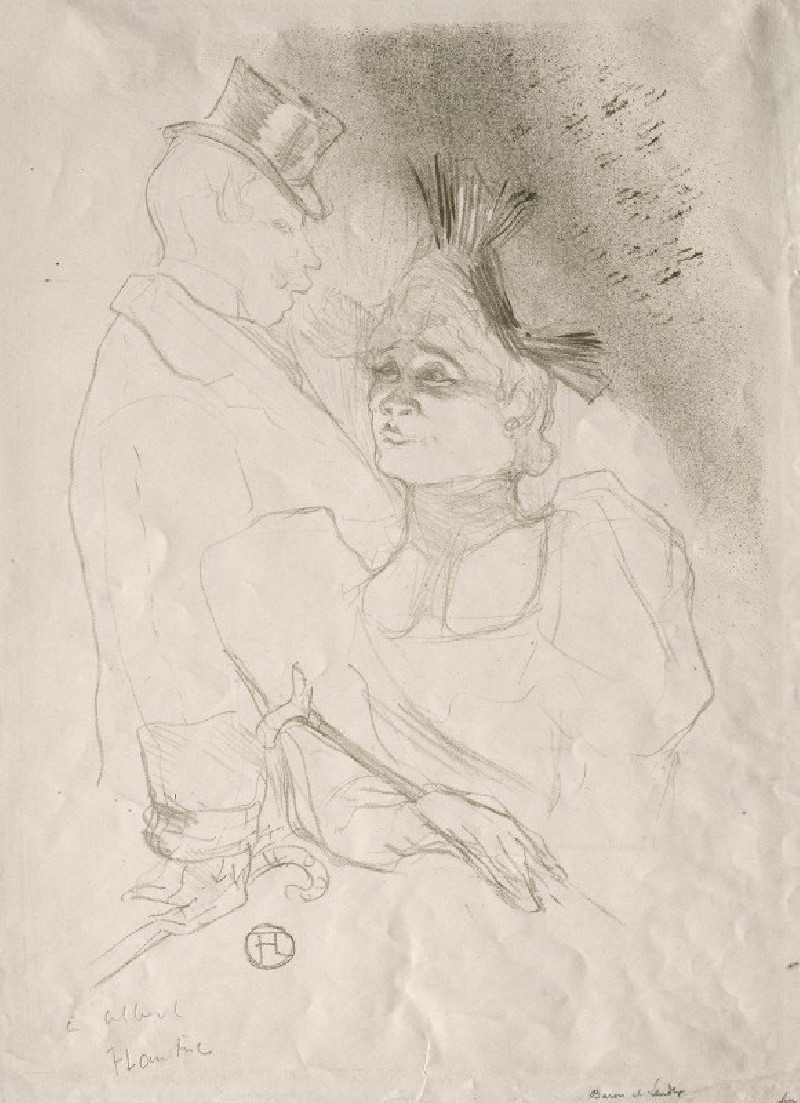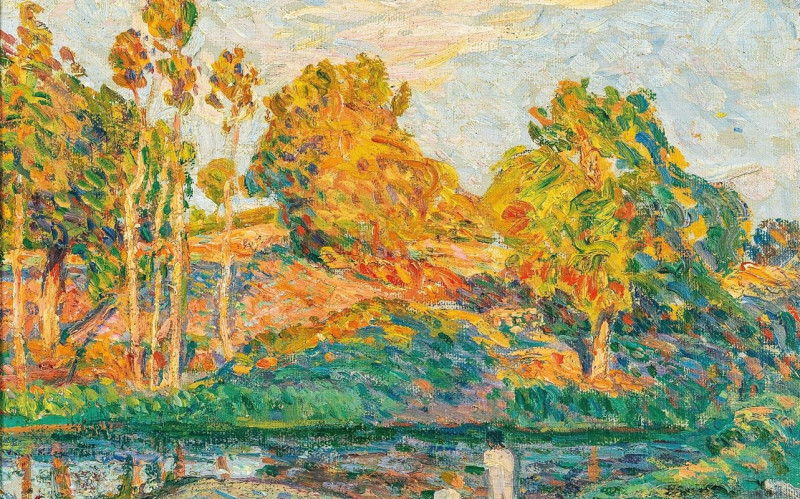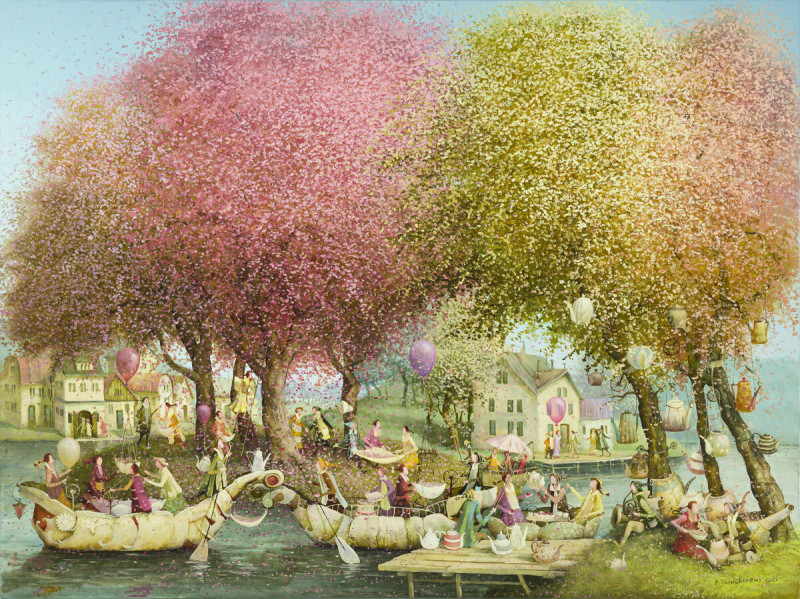L’hiver À Moret (1891)
Technique: Giclée quality print
Recommended by our customers
More about this artwork
Discover the serene tranquility of Alfred Sisley’s "L’hiver à Moret" from 1891, an exquisite example of Impressionism capturing the quiet beauty of winter. In this painting, Sisley portrays a frost-kissed landscape along the banks of the Loing Canal at Moret-sur-Loing, where he spent the latter part of his life.In the foreground, delicate reflections dance across the icy waters, intersected by a wooden bridge leading to an age-worn millhouse. The subtle palette of blues, whites, and soft earth tones creates a feeling of calm and silence, evocative of a chilly winter's day. Bare trees, their branches etched against the overcast sky, line the riverbank, providing a stark contrast to the soft shapes and contours of the architecture and sleepy canal.This painting not only showcases Sisley’s mastery in depicting natural light and atmospheric conditions but also evokes a deep sense of peace and introspection. “L’hiver à Moret” is a mesmerizing scene, inviting viewers to pause and appreciate the quiet stillness of the season.
Delivery
Returns
Alfred Sisley (1839–1899), an English impressionist artist, was renowned for his breathtaking impressionist landscape paintings. Born in 1839 to a wealthy family in Paris, Sisley spent most of his life in France. Despite being intended for a career in commerce, he rebelled and pursued his passion for painting as an amateur in the studio of Charles Gleyre, where he befriended artists Claude Monet and Pierre-Auguste Renoir. The financial loss of his family in the Franco-German War led Sisley to make a career out of his art, though it left him financially distressed. It wasn't until after his passing in 1899 that the true value of his work was recognized.






